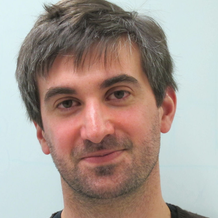Reinforcement Learning and Control
Model-based Reinforcement Learning and Planning
Object-centric Self-supervised Reinforcement Learning
Self-exploration of Behavior
Causal Reasoning in RL
Equation Learner for Extrapolation and Control
Intrinsically Motivated Hierarchical Learner
Regularity as Intrinsic Reward for Free Play
Curious Exploration via Structured World Models Yields Zero-Shot Object Manipulation
Natural and Robust Walking from Generic Rewards
Goal-conditioned Offline Planning
Offline Diversity Under Imitation Constraints
Learning Diverse Skills for Local Navigation
Learning Agile Skills via Adversarial Imitation of Rough Partial Demonstrations
Combinatorial Optimization as a Layer / Blackbox Differentiation
Object-centric Self-supervised Reinforcement Learning
Symbolic Regression and Equation Learning
Representation Learning
Stepsize adaptation for stochastic optimization
Probabilistic Neural Networks
Learning with 3D rotations: A hitchhiker’s guide to SO(3)
Physics of Body Shape and Motion

Humans live in a real world governed by the laws of physics; that is, we apply and exploit forces, such as gravity, in our daily interactions with the world. In this project we allow virtual humans to interact with a virtual world subject to the laws of physics. How would one's body shape deform in case of a collision with an object? How would our walk pattern look like if we weighed a few kilos more?
To model soft-tissue dynamics, we learn a layered volumetric body model from data []. To enable this we extend the triangulated mesh of the SMPL body model with a volumetric tetrahedral model called VSMPL. VSMPL contains an inner "rigid" layer and an outer soft-tissue layer. Given 4D sequences of people in motion, we learn the physical properties (Young's modulus) of the outer tetrahedra. We do this such that, when simulated in motion using a finite element method, the surface motion of the VSMPL model resembles the observations. The learned model is a realistic full-body avatar that generalizes to novel motions and external forces.
We also address the problem of retargeting the captured motion of one person onto a different person with a different body shape and physical properties (e.g.~taller, heavier, thinner) such that the new morphology is taken into account []. We obtain visually plausible simulations using a simplified representation of human body shape that we animate using physically-based retargeting. We develop a novel spacetime optimization approach that learns and robustly adapts physical controllers to new bodies and constraints. The method automatically adapts the motion to a subject with the novel target body shape, respecting the physical properties, and producing an appropriate movement. This makes it easy to create a varied set of motions from a single mocap sequence by simply varying the characters.
Members
Publications





